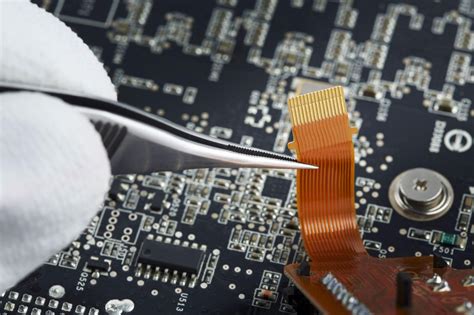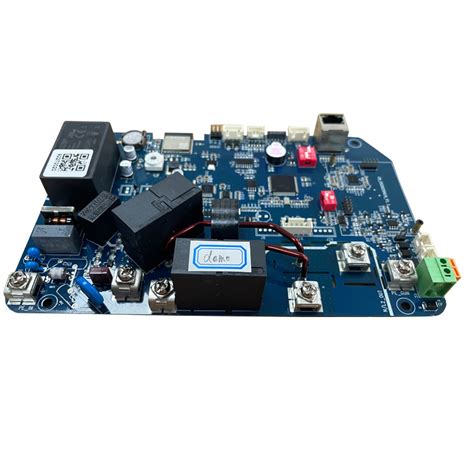Innovations in Assembly Companies for PCB Manufacturing

Key Takeaways
The realm of pcb assembly has witnessed remarkable transformations driven by technological advancements and innovative practices. Assembly companies specializing in pcba are increasingly adopting state-of-the-art machinery and software that enhance their operational efficiency. The integration of robotics and automation technologies plays a crucial role in these enhancements, allowing for faster assembly times and reducing the likelihood of human error. Furthermore, the implementation of sophisticated quality control systems has significantly improved the reliability and functionality of finished products. As these companies strive to meet rising market demands, they are also focusing on environmentally friendly practices that minimize waste and promote sustainable methods in their production processes. Embracing these advancements not only augments their competitive edge but also ensures they remain at the forefront of industry innovation, setting new standards for quality and efficiency in pcb assembly.
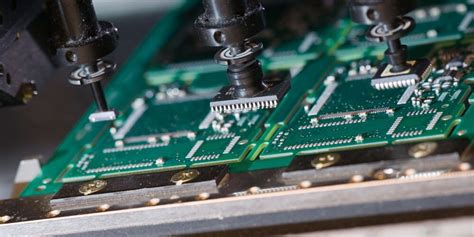
Overview of PCB Manufacturing in Assembly Companies
The landscape of PCB manufacturing is rapidly evolving, with assembly companies at the forefront of these changes. These companies focus on the intricate process of PCB assembly, often referred to as PCBA, which is essential for producing electronic circuits that meet ever-increasing demands for efficiency and quality. Recent developments in technology have made it possible to optimize the assembly process significantly, leading to shorter production times and reduced costs without compromising the integrity of the final product.
Innovative technologies such as advanced robotics and precision placement machines are transforming how assembly lines operate. Automation not only speeds up processes but also minimizes human error, resulting in a more reliable output. Furthermore, the integration of data analytics allows for real-time monitoring and adjustments during production, ensuring that each stage adheres to strict quality standards.
“Investing in modern technology can provide a competitive edge in PCB manufacturing,” suggests industry experts.
In today’s fast-paced electronics market, assembly companies must embrace these technological shifts to remain relevant. As consumer preferences evolve, so too must their approaches to manufacturing. The focus on sustainability has also led many assembly companies to adopt greener practices, reflecting a commitment not only to quality but also to environmental responsibility.
The continuous drive for improvement in PCBA processes means that assembly companies play a crucial role in defining the future of electronics manufacturing, ensuring they can meet both existing and emerging challenges effectively.

Recent Technological Advancements in PCB Assembly
The world of PCB assembly is rapidly evolving, driven by innovative technologies that aim to enhance production efficiency and quality. Recent advancements in pcba processes integrate automation and real-time monitoring systems, allowing assembly companies to reduce errors while increasing throughput. The emergence of smart manufacturing practices, such as the Internet of Things (IoT) and big data analytics, enables companies to gather and analyze large volumes of production data. This analysis allows for predictive maintenance, minimizing unexpected downtimes that can hinder the manufacturing process.
Furthermore, the use of advanced materials in PCB assembly is paving the way for lighter, more durable products with enhanced performance characteristics. The introduction of flexible PCBs, as well as rigid-flex designs, has increased design versatility for various applications.
Below is a summary table representing some recent technological advancements that have been widely adopted:
| Technology | Benefits | Application Scope |
|---|---|---|
| IoT Integration | Real-time data collection and monitoring | Production floors and logistics |
| Flexible PCBs | Lightweight design with increased functionality | Portable devices, wearables |
| Robotics | Enhanced precision and reduced labor costs | High-volume production |
| Advanced Materials | Greater durability and performance | Aerospace, automotive electronics |
Incorporating these innovations not only streamlines the production process, but also supports assembly companies in meeting the increasing demands for high-quality pcba products across various industries. As technology continues to propel the industry forward, remaining adaptable will be key for businesses aiming to maintain a competitive edge.
Streamlining Processes: Best Practices in PCB Manufacturing
In the fast-paced world of PCB assembly, companies are continuously seeking ways to optimize their manufacturing processes. One of the best practices emerging in the industry is the integration of lean manufacturing principles, which focuses on minimizing waste while maximizing productivity. By conducting thorough assessments of workflow and identifying bottlenecks, assembly companies can implement changes that lead to smoother operations. Another significant advancement is the adoption of advanced software tools for better project management and real-time monitoring, enabling teams to track progress and make informed decisions promptly. Furthermore, the utilization of automation technologies in pcba—such as robotic placement and inspection—greatly enhances precision and speed, reducing human error during assembly operations. Additionally, fostering a culture of continuous improvement among employees encourages innovative ideas that can further streamline PCB manufacturing processes. As assembly companies adapt to these best practices, they stand to gain not only in terms of efficiency but also in delivering higher-quality products to clients.
The Role of Automation in Enhancing Assembly Efficiency
In the rapidly evolving world of pcb assembly, automation plays a pivotal role in transforming the efficiency and quality of production processes. By integrating advanced robotic systems and intelligent software into the assembly lines, companies are significantly reducing manual intervention, which often introduces the risk of errors. Automated equipment designed for PCBA (Printed Circuit Board Assembly) not only streamlines workflows but also accelerates throughput, allowing for a higher volume of products to be assembled in less time. The incorporation of real-time data analytics further enhances decision-making capabilities, enabling manufacturers to proactively address potential issues before they escalate into major problems. This blend of technology fosters a more robust quality assurance process, ensuring each assembly meets strict industry standards. Additionally, automation facilitates a safer working environment by minimizing repetitive tasks and lowering physical strain on workers. As assembly companies continue to embrace automation, they are not simply keeping pace with industry demands; they are setting new benchmarks for efficiency and reliability in pcb assembly processes that will shape the future landscape of electronic manufacturing.
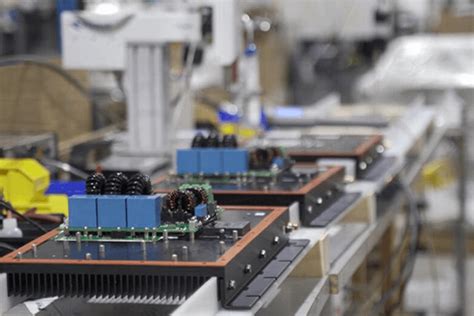
Future Trends: What’s Next for PCB Assembly Companies?
As the landscape of pcb assembly continues to evolve, companies are increasingly focusing on innovative approaches to stay competitive in the market. One major trend is the increasing integration of automation and smart technologies, which significantly enhances the speed and accuracy of PCBA processes. Automation not only reduces human error but also streamlines assembly workflows, leading to faster turnaround times and reduced production costs. Additionally, the rise of Industry 4.0 is prompting pcb assembly companies to adopt advanced data analytics and machine learning for predictive maintenance, resource management, and quality control. These technologies enable companies to optimize their supply chain management, ensuring that materials are procured and utilized more efficiently. Furthermore, there is a growing emphasis on sustainability practices within PCBA processes. By focusing on reducing waste and implementing eco-friendly materials, assembly companies are not only meeting regulatory demands but also responding to increasing consumer preferences for environmentally responsible products. As we look ahead, it’s clear that embracing innovations—whether through technology or sustainable practices—will be crucial for PCB assembly companies aiming to thrive in a rapidly changing industry landscape.
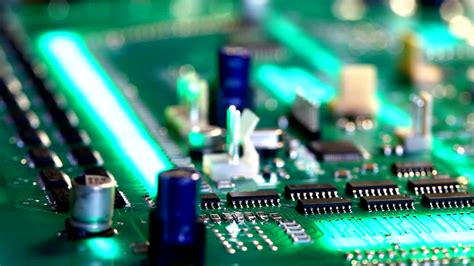
Case Studies: Successful Implementation of New Technologies
In today’s rapidly evolving landscape of pcb assembly, several assembly companies have successfully integrated new technologies to enhance their pcba processes. For instance, Company X adopted a state-of-the-art automated inspection system that employs advanced machine vision technology. This not only reduced the error rate in component placement but also significantly accelerated the inspection cycle time, ensuring higher accuracy and quality in production.
Furthermore, Company Y implemented predictive maintenance tools into their pcb assembly lines, allowing them to proactively address equipment malfunctions before they could disrupt operations. This shift not only improved overall throughput but also saved costs associated with unplanned downtime. Another notable example is Company Z’s use of modular assembly techniques, which provided flexibility and adaptability in their production processes, enabling them to respond swiftly to market demands.
These case studies demonstrate how innovative practices and technology advancements can play a crucial role in enhancing both efficiency and quality within the pcb assembly sector. By embracing modern methodologies like automation, predictive analytics, and modular systems, these companies are setting new benchmarks in pcba standards, paving the way for the future of manufacturing.
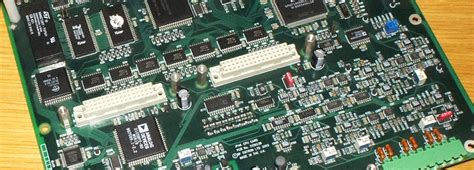
Sustainability Practices in PCB Manufacturing and Assembly
In recent years, there has been a growing emphasis on sustainability within the PCB assembly industry. Assembly companies are increasingly adopting eco-friendly practices to minimize their environmental footprint while maintaining quality and efficiency. One crucial approach involves the use of lead-free soldering and biodegradable materials, which not only meet regulatory requirements but also appeal to eco-conscious clients. Moreover, many pcb assembly companies are investing in energy-efficient machinery that reduces power consumption and lowers greenhouse gas emissions during the production process. Another notable practice is the implementation of closed-loop recycling systems, which allow companies to reclaim materials from defective units or waste products, thereby promoting circular economy principles. This shift not only conserves resources but also enhances overall operational efficiency. Additionally, sustainable procurement strategies are being adopted, ensuring that raw materials used in pcba processes come from responsible sources. By integrating these sustainability practices into their operations, assembly companies not only enhance their corporate social responsibility profiles but also position themselves competitively in a market increasingly driven by environmental considerations.
Conclusion
In the rapidly evolving landscape of PCB assembly, the advancements made by assembly companies are noteworthy, substantially impacting the quality and efficiency of the production process. These organizations are increasingly adopting innovative technologies that enhance the PCBA operations, from design to final assembly. The integration of automation tools has streamlined manufacturing processes, allowing for faster turnaround times without compromising on quality. Furthermore, these companies are focusing on rigorous quality control measures to ensure that each PCB meets high standards, thereby minimizing defects and increasing customer satisfaction.
Sustainability has also become a critical component; many assembly companies are exploring eco-friendly materials and practices to reduce their environmental footprint. As industry demand grows and technology continues to advance, these trends suggest a bright future for PCB assembly operations. With an eye toward maintaining competitive advantage, companies are poised to embrace further innovations that could redefine manufacturing standards in the electronics market. This dynamic environment highlights the crucial role of continuous improvement and adaptation in keeping pace with both customer expectations and technological capabilities.
FAQs
What is PCB assembly?
PCB assembly, often referred to as PCBA, is the process of connecting electronic components to a printed circuit board (PCB) to create a functional electronic circuit.
What are the key processes involved in PCB assembly?
The key processes include placing components on the board, soldering, inspection, and testing to ensure quality and reliability.
How do assembly companies enhance efficiency in PCB manufacturing?
Assembly companies enhance efficiency through the adoption of automation, streamlined workflows, and implementation of advanced technologies that ensure faster production times without compromising quality.
What role does quality control play in PCB assembly?
Quality control is critical in ensuring that each PCBA meets the required standards before it reaches the market. This includes thorough inspection and testing at various stages of production.
What are some recent technological advancements in PCBA?
Recent advancements include the use of robotic arms for precise placement of components, advanced soldering techniques like laser soldering, and the integration of artificial intelligence for improved inspection processes.
For those interested in exploring more about PCB assembly, please click here: Andwin PCB Assembly.



